Introduction to Africa's Majestic Mountains
Africa's mountains are as diverse as its people, each with its own story, culture, and natural beauty. The highest mountains in Africa stretch from the northern part of the continent down to the southern tip, offering a wide range of experiences for climbers and trekkers. Whether you're looking to conquer the tallest peaks or marvel at their grandeur, Africa's mountains will leave you in awe.
In this article, we'll cover:
- Mount Kilimanjaro - The Roof of Africa
- Mount Kenya - The Sacred Peak
- Mount Stanley - The Snow-Capped Giant
- Mount Meru - The Hidden Gem
- Mount Elgon - The Massive Caldera
- Mount Baker - The Mountains of the Moon
- Ras Dashen - The Highest Mountain in Ethiopia
- Mount Karisimbi - The Virunga Volcano
- Thabana Ntlenyana - The Highest Mountain in Southern Africa
- Mafadi - The Highest Mountain in South Africa
Let's jump on a journey through these incredible peaks.
1. Mount Kilimanjaro (19,341 Feet) - The Roof of Africa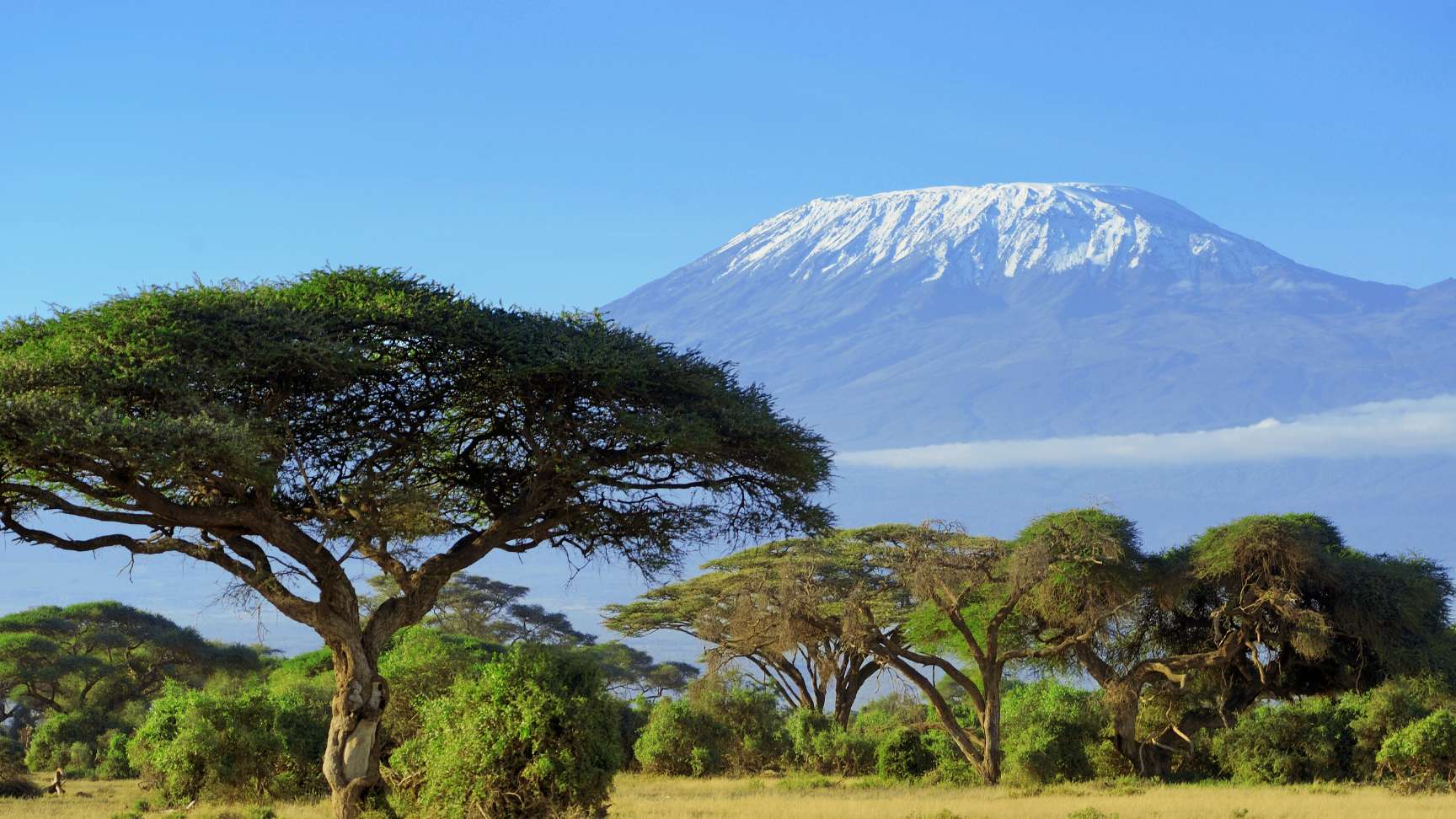
At the top of the list is Mount Kilimanjaro, the highest mountain in Africa and one of the most iconic peaks in the world. Located in northeastern Tanzania, Kilimanjaro stands at 5,895 meters (19,341 feet) above sea level. This dormant volcano is renowned for its snow-capped summit and diverse ecosystems, ranging from tropical rainforest to alpine desert and arctic conditions near the top.
Kilimanjaro is a popular destination for trekkers, offering a relatively non-technical climb compared to other high peaks. However, the altitude presents a significant challenge, requiring proper acclimatization. The mountain's three volcanic cones—Kibo, Mawenzi, and Shira—add to its dramatic landscape, making it a must-visit for adventure seekers.
Unique Features
Kilimanjaro's iconic snow-capped summit is one of the most recognizable sights in Africa. The mountain is famous for its ecological diversity, with five distinct climate zones ranging from tropical rainforests at the base to arctic conditions at the summit. The trek to the top is a bucket-list adventure, attracting thousands of climbers each year.
Climbing Kilimanjaro
Climbing Kilimanjaro doesn't require technical mountaineering skills, but it is physically demanding. There are several routes to the summit, with the Marangu, Machame, and Lemosho routes being the most popular. The climb typically takes 5-9 days, depending on the route and pace.
Read our blog, Comprehensive Guidebook for Kilimanjaro Climbing and Trainig Plan for Kilimanjaro Climb.
Why Visit Kilimanjaro?
- Breathtaking Views: On a clear day, the views from the summit are unparalleled, offering a glimpse of the vast African plains below.
- Unique Ecosystems: Experience the different climate zones as you ascend, from lush forests to barren alpine deserts.
- Cultural Experience: The local Chagga people have lived in the region for centuries and offer rich cultural insights and warm hospitality.
Climb Kilimanjaro with a Purpose! Experience breathtaking views and make a positive impact on local communities with Footprint Adventure. Reserve your spot now!
2. Mount Kenya (17,057 Feet) - The Sacred Peak
Mount Kenya is Africa's second-highest mountain, rising to 5,199 meters (17,057 feet). Located in central Kenya, this extinct stratovolcano is part of the Mount Kenya National Park, a UNESCO World Heritage Site. The mountain features a rugged landscape of jagged peaks, glaciers, and deep valleys.
The highest point on Mount Kenya is Batian, followed closely by Nelion and Lenana. While Batian and Nelion require technical climbing skills, Point Lenana is more accessible and popular among trekkers. The mountain's diverse flora and fauna, including giant lobelias and the rare Mount Kenya hyrax, add to its appeal for nature lovers.
Unique Features
Mount Kenya is an extinct stratovolcano that features rugged peaks, glaciers, and diverse flora and fauna. The mountain has three prominent peaks: Batian, Nelion, and Lenana, with Batian being the highest. The landscape is characterized by alpine moorlands, bamboo forests, and crystal-clear glacial lakes.
Climbing Mount Kenya
Climbing Mount Kenya is more technically challenging than Kilimanjaro, especially if you're aiming for the highest peaks, Batian and Nelion, which require rock climbing skills. The Lenana Peak, however, is more accessible and can be reached by trekkers without technical expertise.
Why Visit Mount Kenya?
- Stunning Landscapes: The diverse ecosystems, from bamboo forests to glacial valleys, make every step of the climb visually rewarding.
- Wildlife Encounters: The mountain is home to unique wildlife, including elephants, leopards, and the endangered Mount Kenya bush viper.
- Less Crowded: Compared to Kilimanjaro, Mount Kenya offers a more serene and less crowded climbing experience.
3. Mount Stanley (16,761 Feet) - The Snow-Capped Giant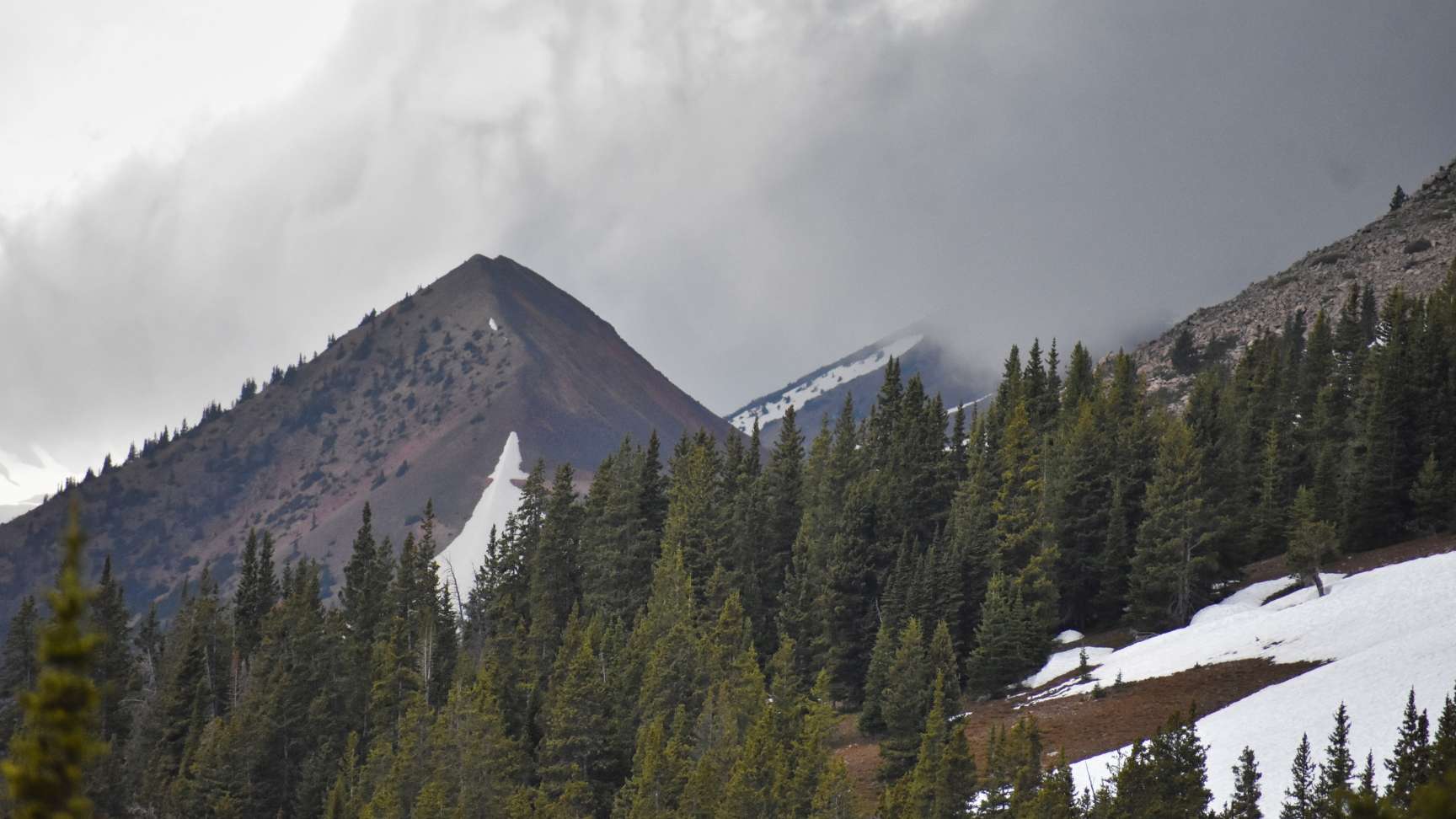
Mount Stanley, the highest mountain in the Rwenzori Range, straddles the border between Uganda and the Democratic Republic of the Congo. With an elevation of 5,109 meters (16,763 feet), it is Africa's third-highest peak. Mount Stanley is known for its challenging climbs and remote location, offering an authentic wilderness experience.
The mountain's Margherita Peak is the highest point, often covered in snow and ice despite its proximity to the equator. The Rwenzori Mountains are also known as the "Mountains of the Moon," and they are known for their stunning alpine scenery, including glaciers, waterfalls, and unique vegetation like giant heathers and lobelias.
Unique Features
Mount Stanley is known for its dramatic landscapes, which include glaciers, alpine forests, and the stunning Margherita Peak. The Rwenzori Mountains are one of the few places in Africa where you can find glaciers, though they are sadly retreating due to climate change.
Climbing Mount Stanley
Climbing Mount Stanley is challenging and requires both technical skills and physical endurance. The ascent to Margherita Peak involves glacier trekking and rock climbing. The trek typically takes 7-10 days, with the journey through the lush Rwenzori Mountains being a highlight in itself.
Why Visit Mount Stanley?
- Glacial Beauty: Experience the rare sight of glaciers in Africa, a disappearing natural wonder.
- Biodiversity: The Rwenzori Mountains are a UNESCO World Heritage Site, home to a rich variety of plant and animal species.
- Remote Adventure: Mount Stanley offers an authentic wilderness experience, far from the crowds of more popular peaks.
4. Mount Meru (14,968 Feet) - The Hidden Gem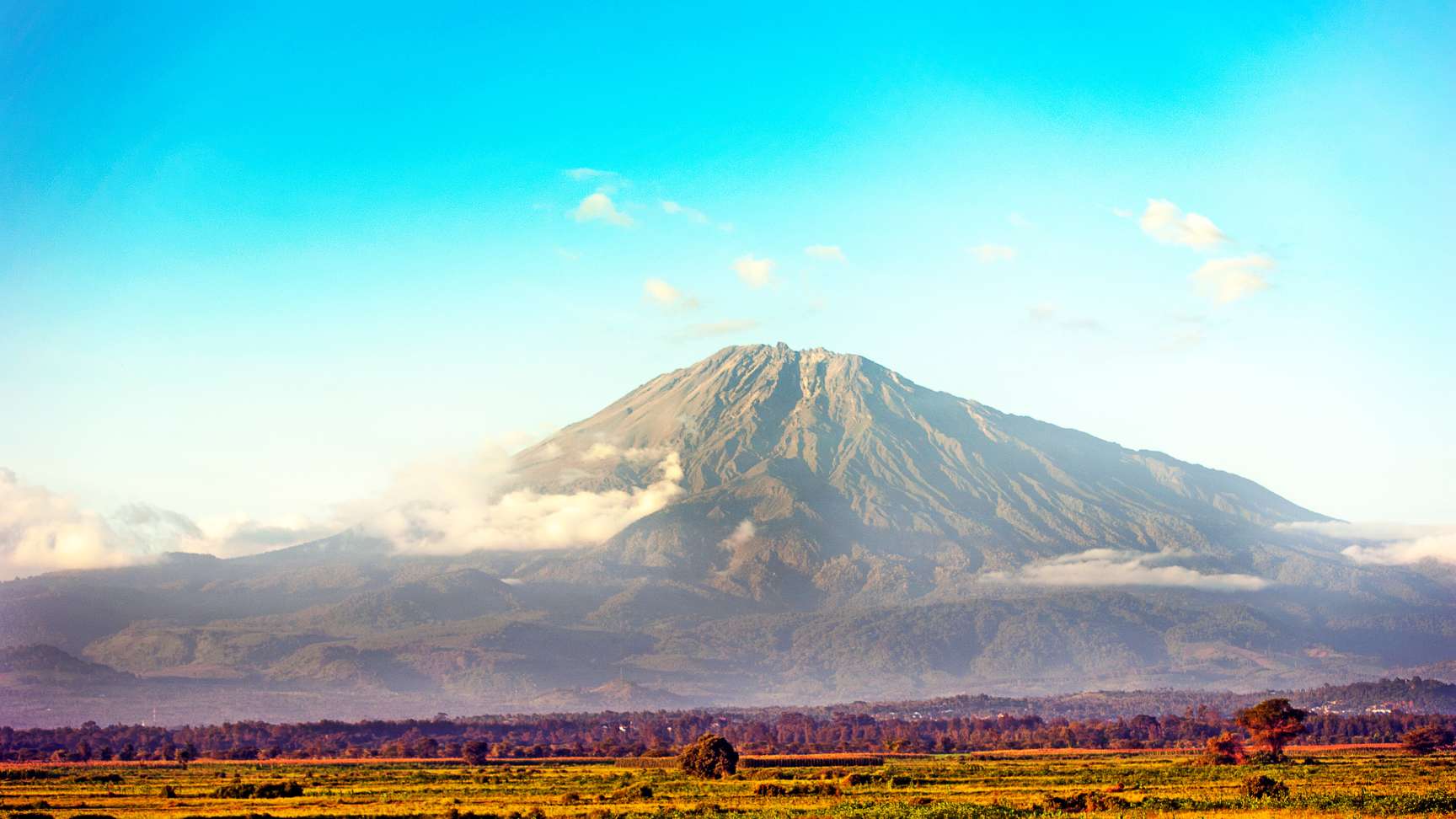
Often overshadowed by its taller neighbour, Mount Kilimanjaro, Mount Meru is a majestic volcano in Tanzania that stands at 4,562 meters (14,968 feet). Located within Arusha National Park, Mount Meru offers a challenging and rewarding climb with less crowded trails than Kilimanjaro.
The trek up Mount Meru takes you through diverse landscapes, including lush forests inhabited by wildlife like buffalo, giraffes, and monkeys, before reaching alpine deserts and the rocky summit. The final ascent involves a dramatic ridge walk with stunning views of the Ash Cone and Kilimanjaro in the distance. Mount Meru is also an excellent acclimatization hike for those planning to tackle Kilimanjaro.
Unique Features
Mount Meru offers stunning views of Kilimanjaro and the surrounding landscape. The mountain's slopes are covered with lush forests that are home to various wildlife, including buffaloes, giraffes, and leopards. The summit offers breathtaking panoramas and the satisfaction of conquering a challenging climb.
Climbing Mount Meru
Climbing Mount Meru is often used as a warm-up for Kilimanjaro, but it's a rewarding adventure in its own right. The trek takes about 4 days and involves steep ascents, but the trails are well-maintained. The summit night is particularly challenging, with a pre-dawn start to reach the top in time for sunrise.
Why Visit Mount Meru?
- Less Crowded: Compared to Kilimanjaro, Mount Meru is less visited, offering a more peaceful trekking experience.
- Scenic Beauty: The views of Kilimanjaro from Meru are stunning, and the diverse landscapes keep the trek enjoyable.
- Wildlife: The trek begins in Arusha National Park, providing opportunities to spot wildlife before the climb.
5. Mount Elgon (14,177 Feet) - The Massive Caldera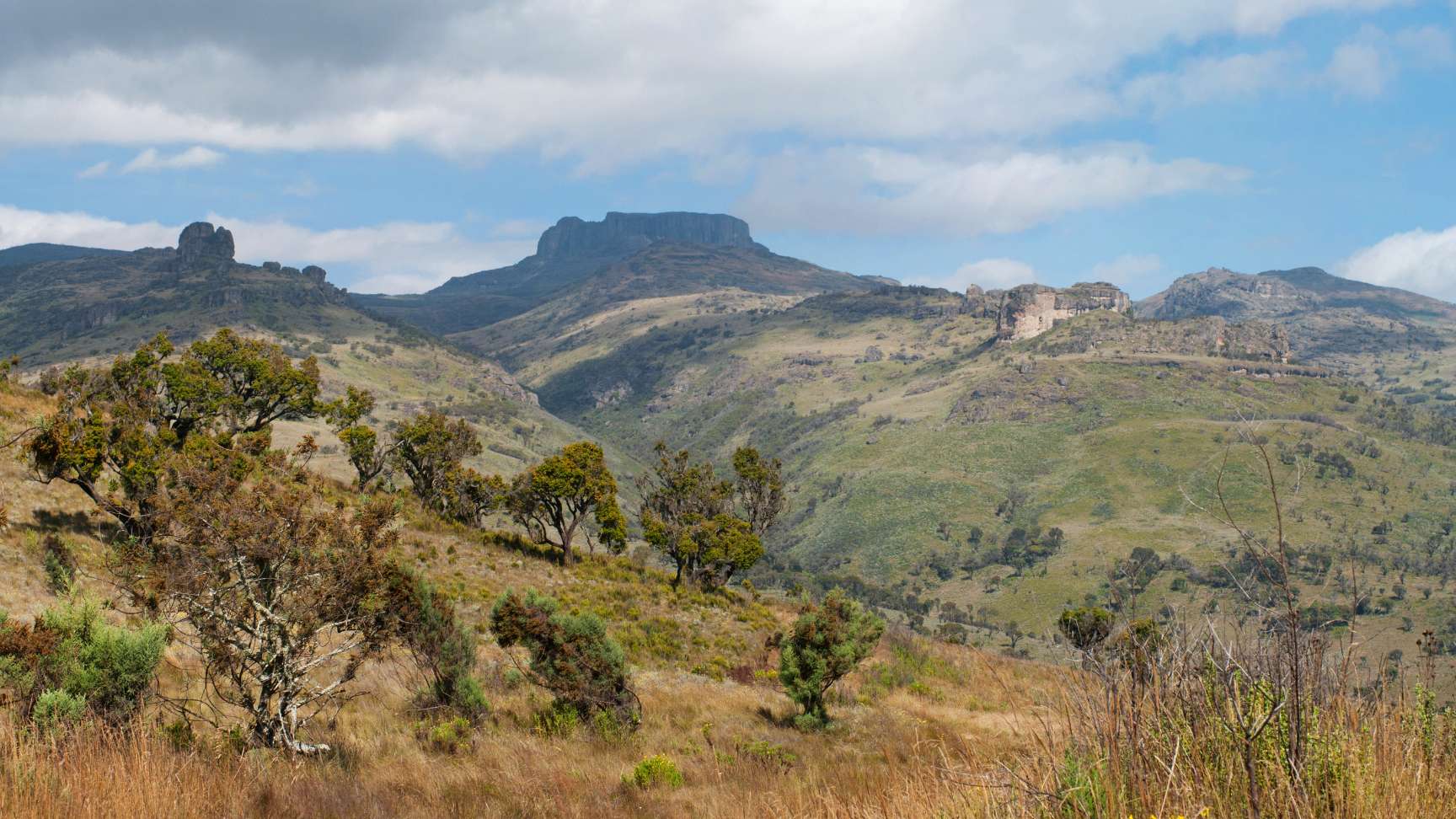
Mount Elgon is an ancient shield volcano located on the border between Uganda and Kenya. At 4,321 meters (14,177 feet), it is famous for having one of the largest volcanic bases in the world and a massive caldera.
The highest point on Mount Elgon is Wagagai Peak on the Ugandan side. The mountain is known for its caves, waterfalls, and diverse ecosystems, making it a popular destination for both climbers and nature lovers. Unlike some of the more challenging peaks in Africa, Mount Elgon offers a more accessible climb, perfect for less experienced hikers.
Unique Features
Mount Elgon's vast caldera and rugged peaks are the main attractions, along with the beautiful Sipi Falls on its slopes. The mountain is covered with moorlands, montane forests, and bamboo zones, offering a variety of landscapes to explore.
Climbing Mount Elgon
The climb up Mount Elgon is less technical than some of Africa's other highest peaks, making it accessible to most trekkers. The trek typically takes 4-6 days, and several routes are available, including the popular Sasa and Sipi trails.
Why Visit Mount Elgon?
- Massive Caldera: Explore one of the largest volcanic calderas in the world, a unique geological feature.
- Cultural Experience: The region around Mount Elgon is home to the Bagisu people, known for their vibrant culture and traditional ceremonies.
- Waterfalls: The Sipi Falls, located on the mountain's slopes, are a stunning sight and a perfect place to relax after the climb.
6. Mount Baker (15,889 Feet) - The Hidden Gem of the Rwenzori Mountains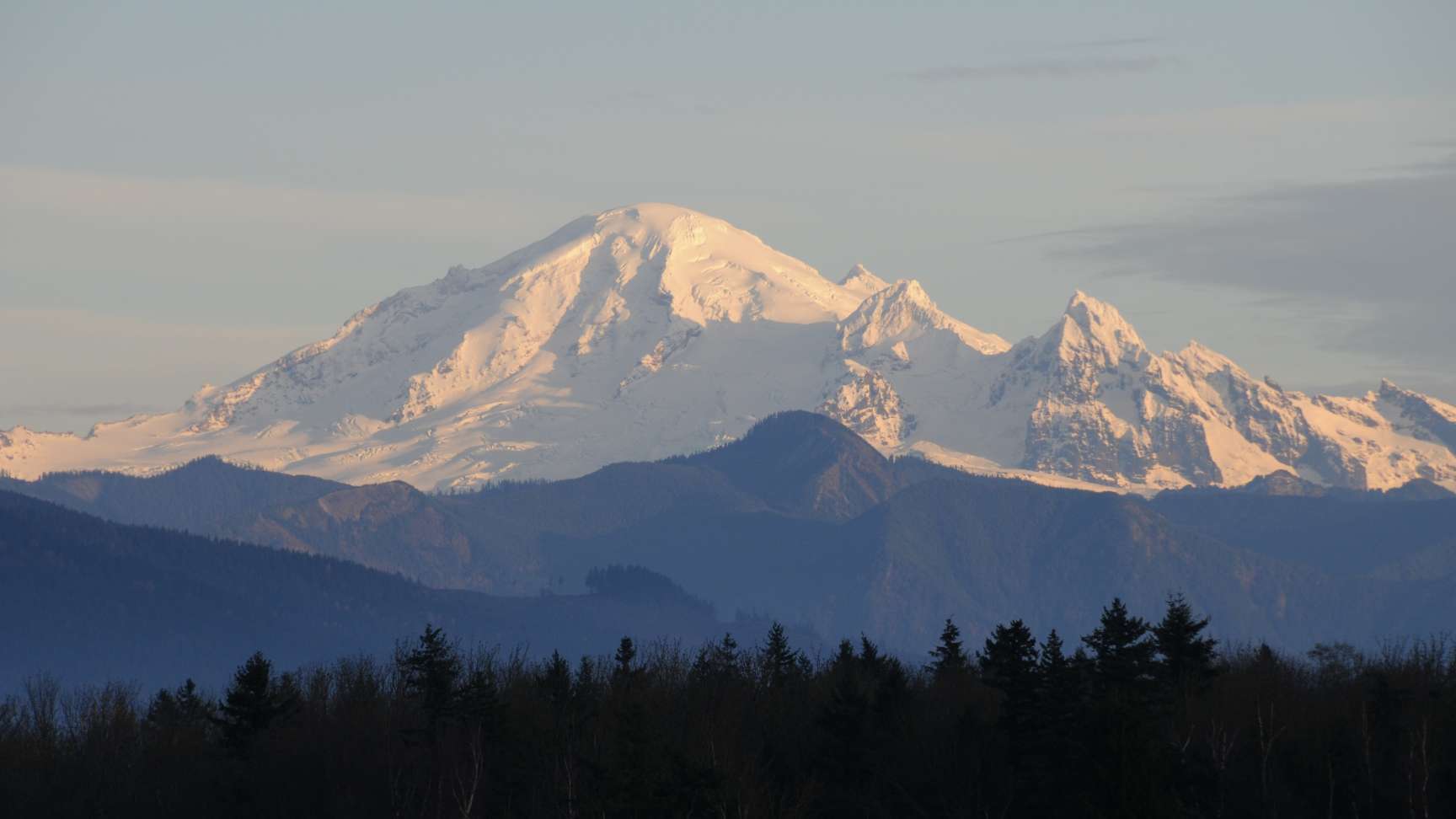
Another peak in the Rwenzori Range, Mount Baker, stands at 4,844 meters (15,892 feet). Named after British explorer Sir Samuel Baker, the mountain is less visited but offers stunning views and a challenging climb. It is one of the prominent peaks in the Rwenzori Mountains, located on the border between Uganda and the Democratic Republic of the Congo. It is the sixth-highest mountain in Africa and part of the famous "Mountains of the Moon."
The highest point, Edward Peak, provides breathtaking vistas of the surrounding valleys and glaciers. Mount Baker's terrain includes steep rock faces, icy slopes, and unique alpine vegetation, making it a destination for severe climbers looking for an off-the-beaten-path adventure.
Unique Features
Mount Baker is known for its rugged and diverse terrain, including glaciers, alpine meadows, and dense forests. The Rwenzori Mountains are often shrouded in mist, giving them a mystical appearance. The mountain is home to a variety of rare and endemic species, making it a biodiversity hotspot.
Climbing Mount Baker
The climb to Mount Baker is challenging and typically takes about 7-9 days. It is often combined with ascents of nearby peaks like Mount Stanley and Mount Speke. The trek involves steep ascents, technical rock climbing, and traversing glaciers. The route offers breathtaking views of the surrounding peaks and the lush landscapes of the Rwenzori National Park.
Why Visit Mount Baker?
- Off-the-Beaten-Path: Mount Baker offers a less crowded alternative to Africa's more famous peaks, providing an authentic wilderness experience.
- Diverse Ecosystems: The Rwenzori Mountains are known for their varied ecosystems, from tropical rainforests to alpine meadows, making the trek a journey through different climates and landscapes.
- Cultural Richness: The Rwenzori region is home to the Bakonzo people, who have lived in these mountains for centuries. Visitors can experience rich cultural traditions.
7. Ras Dashen (14,928 Feet) - The Highest Mountain in Ethiopia
Ras Dashen, the highest peak in Ethiopia, reaches 4,550 meters (14,928 feet) and is part of the Simien Mountains. Known as the "Roof of Ethiopia," Ras Dashen is a popular trekking destination, offering stunning views and a chance to experience the rich culture of the local Amhara people.
The Simien Mountains, a UNESCO World Heritage Site, are famous for their dramatic landscapes, deep gorges, and unique wildlife, including the Gelada baboon and Ethiopian wolf. The trek to Ras Dashen is a multi-day adventure that takes you through some of the most spectacular scenery in Africa.
Unique Features
The Simien Mountains are characterized by jagged peaks, deep valleys, and sharp cliffs. Ras Dashen is the highest point in this rugged range and offers stunning views of the Ethiopian highlands. The area is also home to endemic species like the Gelada baboon and the Walia ibex.
Climbing Ras Dashen
The trek to Ras Dashen is one of the most scenic in Africa. Depending on the route and pace, it takes about 6-10 days. The climb is non-technical but requires good physical fitness due to the altitude and long distances.
Why Visit Ras Dashen?
- Unique Wildlife: The Simien Mountains are a biodiversity hotspot, offering the chance to see rare animals in their natural habitat.
- Cultural Richness: The region is rich in history and culture, with ancient rock-hewn churches and traditional Ethiopian villages to explore.
- Stunning Scenery: The dramatic landscapes of the Simien Mountains are some of the most beautiful in Africa, making this trek a visual feast.
8. Mount Karisimbi (14,787 Feet) - The Virunga Volcano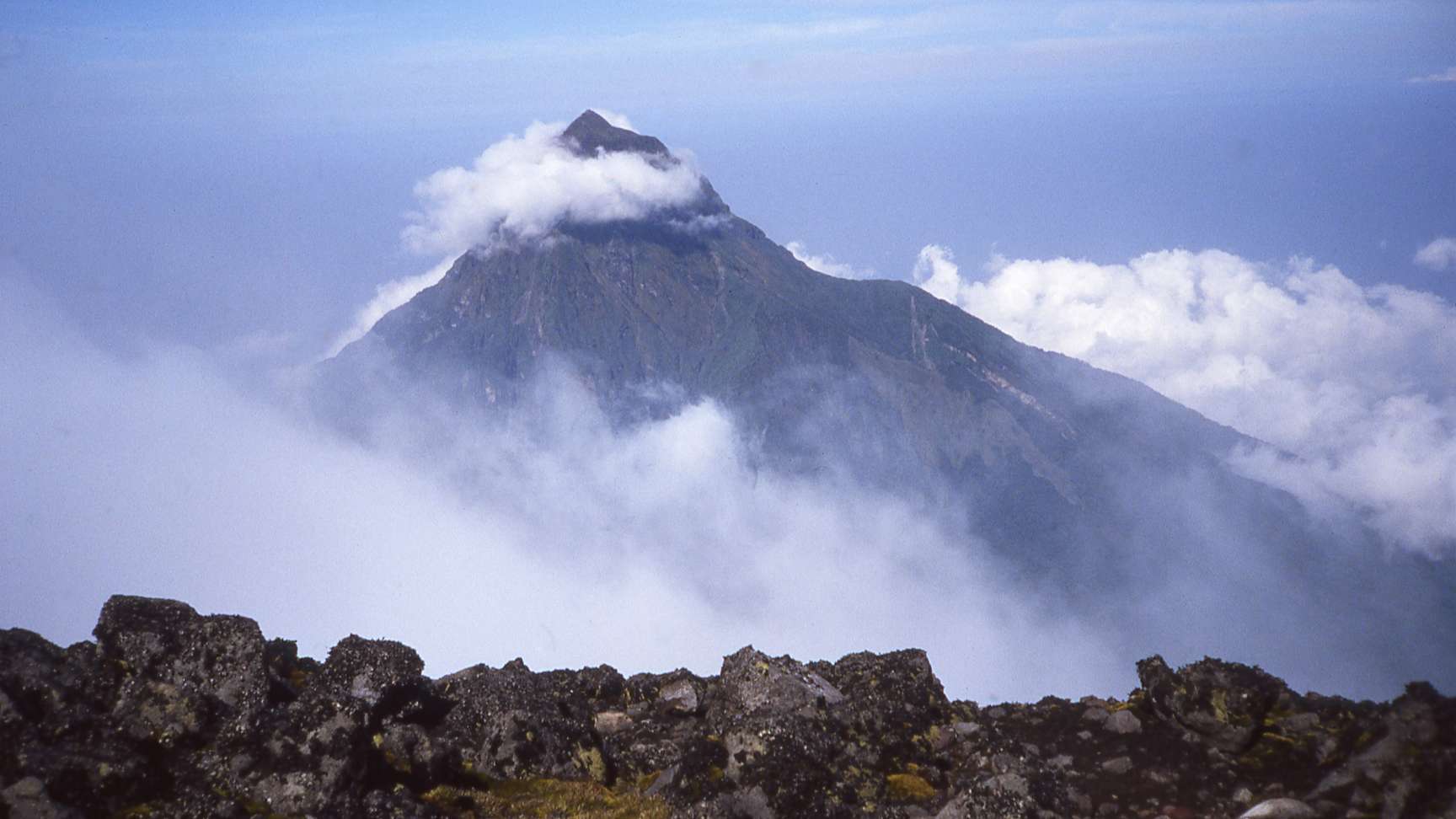
Mount Karisimbi is the highest peak in the Virunga Range, an active stratovolcano straddling the border between Rwanda and the Democratic Republic of the Congo. At 4,507 meters (14,787 feet), It is the tallest of the eight major volcanoes in the region.
The name "Karisimbi" comes from the local Kinyarwanda word "amasimbi," meaning "white shell," referring to the snow that occasionally covers its summit. Climbing Karisimbi involves trekking through dense forest and volcanic terrain, with the added attraction of the nearby mountain gorillas in Volcanoes National Park.
Unique Features
Mount Karisimbi is part of the Virunga Mountains, a chain of volcanic mountains home to the endangered mountain gorilla. The mountain is known for its thick forests, which give way to alpine meadows as you ascend. The summit offers breathtaking views of the surrounding volcanoes and the lush landscapes of the Virunga National Park.
Climbing Mount Karisimbi
The climb to the summit of Karisimbi takes about 2 days and is moderately challenging. The trek involves steep ascents through dense forests, with the final push to the summit being the most demanding. The climb is often combined with gorilla trekking in the nearby parks.
Why Visit Mount Karisimbi?
- Gorilla Trekking: The chance to see mountain gorillas in their natural habitat is a once-in-a-lifetime experience.
- Volcanic Scenery: The Virunga Mountains are a stunning volcanic landscape, with active and dormant volcanoes creating a dramatic backdrop.
- Cultural Encounters: The region is home to the Batwa people, one of Africa's oldest indigenous groups, offering rich cultural experiences.
9. Thabana Ntlenyana (11,424 Feet) - The Highest Mountain in Southern Africa
Thabana Ntlenyana, meaning "Beautiful Little Mountain" in Sesotho, is the highest mountain in southern Africa, standing at 3,482 meters (11,423 feet). Located in Lesotho, within the Drakensberg/Maloti Mountains, it is the tallest peak in the region and a popular destination for hikers.
The climb to the summit of Thabana Ntlenyana is relatively straightforward, making it accessible to hikers of all levels. The mountain offers breathtaking views of the surrounding landscape, including the dramatic cliffs of the Drakensberg range.
Unique Features
Thabana Ntlenyana is part of the Drakensberg-Maloti mountain range, which is known for its rugged beauty and remote landscapes. During the winter months, the mountain is often covered in snow, offering a unique contrast to its otherwise arid surroundings.
Climbing Thabana Ntlenyana
The trek to Thabana Ntlenyana is relatively easy compared to Africa's taller peaks, making it accessible to most hikers. The ascent typically takes 2-3 days, starting from the Sani Pass in South Africa. The route offers beautiful views of the surrounding valleys and highlands.
Why Visit Thabana Ntlenyana?
- Highest in Southern Africa: Standing on the highest point in Southern Africa is a significant achievement for any hiker.
- Scenic Beauty: The Drakensberg-Maloti range is known for its stunning landscapes, including deep valleys, cliffs, and rolling hills.
- Cultural Experience: Lesotho is known as the "Kingdom in the Sky" and offers a unique cultural experience, with traditional Basotho villages dotting the landscape.
10. Mafadi (11,319 Feet) - The Highest Mountain in South Africa
Mafadi is the highest mountain in South Africa, standing at 3,450 meters (11,319 feet) on the border with Lesotho. It is part of the Drakensberg range, known for its rugged beauty and challenging hikes. The ascent to Mafadi is considered one of the toughest in the Drakensberg, requiring multi-day trekking and navigation through rough terrain.
The route to the summit of Mafadi offers a variety of landscapes, from grassy slopes to rocky ridges. The views from the top are breathtaking, with the vast expanse of the Drakensberg stretching out in all directions. This climb is recommended for experienced hikers looking for a challenging adventure.
Unique Features
Mafadi is known for its rugged terrain, with steep cliffs and deep valleys. The Drakensberg Mountains, also known as the "Dragon's Mountains," are famous for their dramatic landscapes, ancient rock art, and unique flora and fauna.
Climbing Mafadi
The climb to Mafadi is challenging and typically takes about 5-7 days. The trek involves steep ascents and descents, with the final push to the summit being particularly tough. The route passes through beautiful scenery, including the famous Tugela Falls, one of the highest waterfalls in the world.
Why Visit Mafadi?
- Highest in South Africa: Conquering the highest peak in South Africa is a rewarding experience for any mountaineer.
- Dramatic Landscapes: The Drakensberg range offers some of the most surprising and beautiful landscapes in Africa.
- Rock Art: The Drakensberg is home to ancient San rock art, providing a glimpse into the history and culture of the region's earliest inhabitants.
Conclusion
The highest mountains in Africa are more than just tall peaks; they are places of incredible natural beauty, rich cultural significance, and thrilling adventure. From the towering heights of Kilimanjaro to the rugged cliffs of the Drakensberg, these mountains offer something for everyone, whether you're an experienced climber or a nature lover seeking to explore the continent's diverse landscapes.
Each of these mountains tells a story—of ancient geological forces, unique ecosystems, and the people who have lived in their shadows for centuries. Climbing them is not just a physical challenge but also a journey into the heart of Africa's natural and cultural heritage.
So, if you're dreaming of standing on the highest mountains in Africa, start planning your adventure today. Whether it's the snow-capped peaks of Kilimanjaro or the rugged cliffs of Mafadi, Africa's mountains are waiting to be explored.
FAQs
What is the highest mountain in Africa?
Mount Kilimanjaro in Tanzania is the highest mountain in Africa, standing at 5,895 meters (19,341 feet).
Which is the highest mountain in southern Africa?
Thabana Ntlenyana in Lesotho is the highest mountain in southern Africa, reaching 3,482 meters (11,423 feet).
What is the highest mountain in South Africa?
Mafadi is the highest mountain in South Africa, standing at 3,450 meters (11,319 feet).
Are there any active volcanoes among the highest mountains in Africa?
Yes, Mount Karisimbi in the Virunga Range is an active stratovolcano and one of the highest mountains in Africa.
How challenging is it to climb Mount Kenya?
Climbing Mount Kenya can be quite challenging, especially the higher peaks like Batian and Nelion, which require technical climbing skills. Point Lenana is more accessible to trekkers.
What should I prepare for when climbing the highest mountains in Africa?
Preparation depends on the mountain, but generally, you'll need to prepare for high altitudes, cold temperatures, and possibly technical climbing. Proper gear, fitness, and acclimatization are key.









